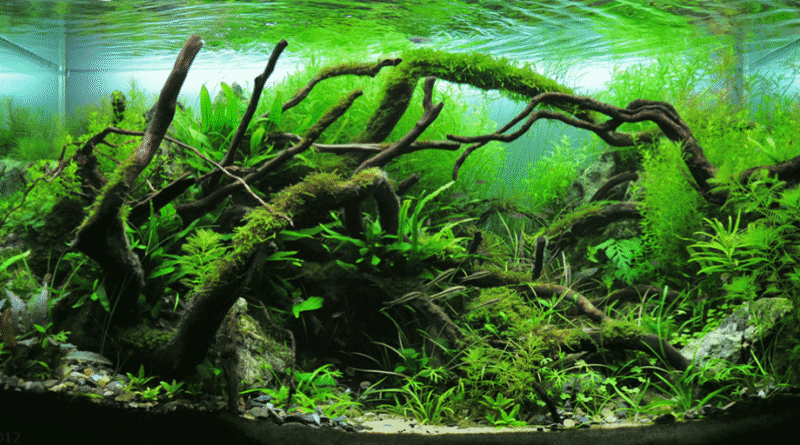Aquascaping for Beginners: The Ultimate Guide to Stunning Underwater Landscapes
Aquascaping is the art of designing beautiful underwater landscapes in your aquarium. It blends creativity, plant care, and layout techniques to turn a regular tank into a living work of art. Whether you want a lush underwater jungle, a serene rock garden, or a natural riverside scene, aquascaping opens up endless possibilities.
For beginners, aquascaping may seem intimidating at first — but it doesn’t have to be. With a little planning and the right approach, you can create a visually stunning aquascape that’s also healthy for your fish and plants.
In this guide, we’ll cover the essentials of aquascaping for beginners: popular styles, the tools you’ll need, how to choose plants and hardscape materials, step-by-step setup instructions, and tips to avoid common mistakes. By the end, you’ll have the confidence to start your first aquascape and watch it flourish.
Aquascaping isn’t just about looks — it’s about crafting a balanced, thriving ecosystem that brings joy and relaxation every time you look at your tank.
What is Aquascaping?
Aquascaping is the practice of arranging aquatic plants, rocks, driftwood, and other decorative elements in an aquarium to create a visually pleasing and natural-looking underwater landscape. It’s often described as “underwater gardening,” but it’s more than just placing plants — it’s about balancing form, function, and the needs of aquatic life.
While the concept of decorated aquariums has been around for decades, modern aquascaping gained worldwide attention thanks to influential aquarists like Takashi Amano, whose “Nature Aquarium” style inspired countless hobbyists. Today, aquascaping has evolved into a blend of art and science, with styles ranging from minimalist rock layouts to lush plant-filled sceneries.
A successful aquascape combines aesthetic design principles — like focal points and depth — with an understanding of plant growth, water chemistry, and lighting. This balance creates not only a beautiful display but also a thriving aquatic ecosystem for fish and invertebrates.
Whether you’re aiming for a serene Zen-like layout or a dense jungle effect, aquascaping offers endless possibilities for personal expression.
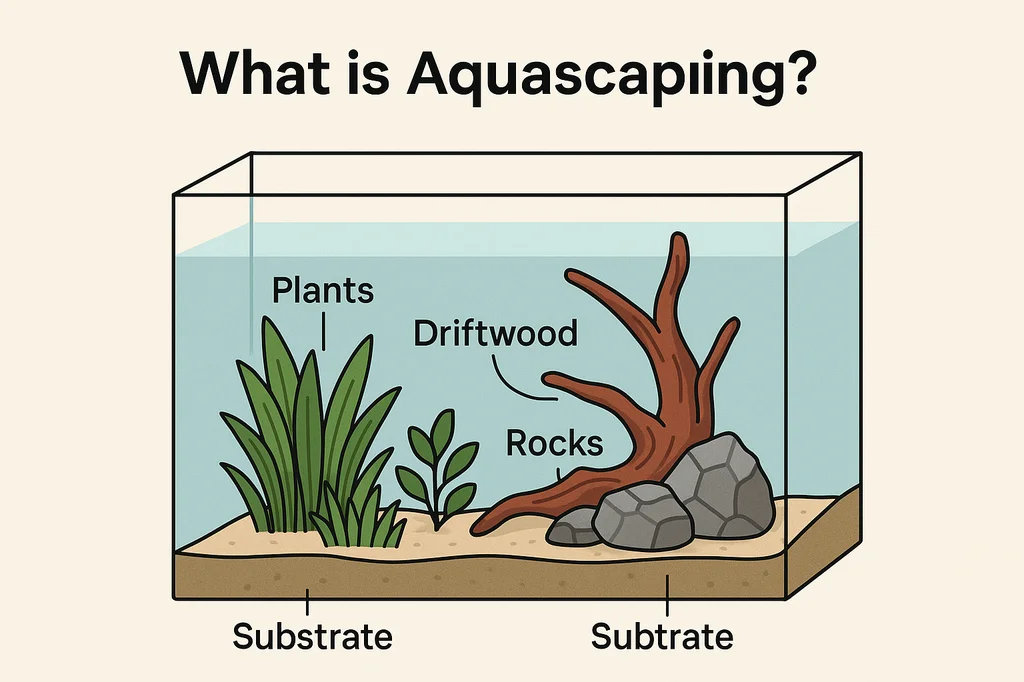
Benefits of Aquascaping
Aquascaping offers more than just a beautiful aquarium to look at — it brings practical and emotional benefits for both you and your aquatic life.
1. Aesthetic Appeal
A well-designed aquascape can become a striking focal point in your home or office, blending art with nature.
2. Healthier Aquatic Environment
Live plants help filter the water by absorbing nitrates, releasing oxygen, and providing shelter for fish and invertebrates.
3. Stress Reduction
Studies show that watching aquariums can lower stress levels, improve mood, and even reduce blood pressure.
4. Educational Value
Aquascaping teaches patience, problem-solving, and an appreciation for ecological balance — valuable lessons for hobbyists of all ages.
Whether you’re after a calming, natural scene or an inspiring work of art, aquascaping creates a space where beauty and biology work together in harmony.
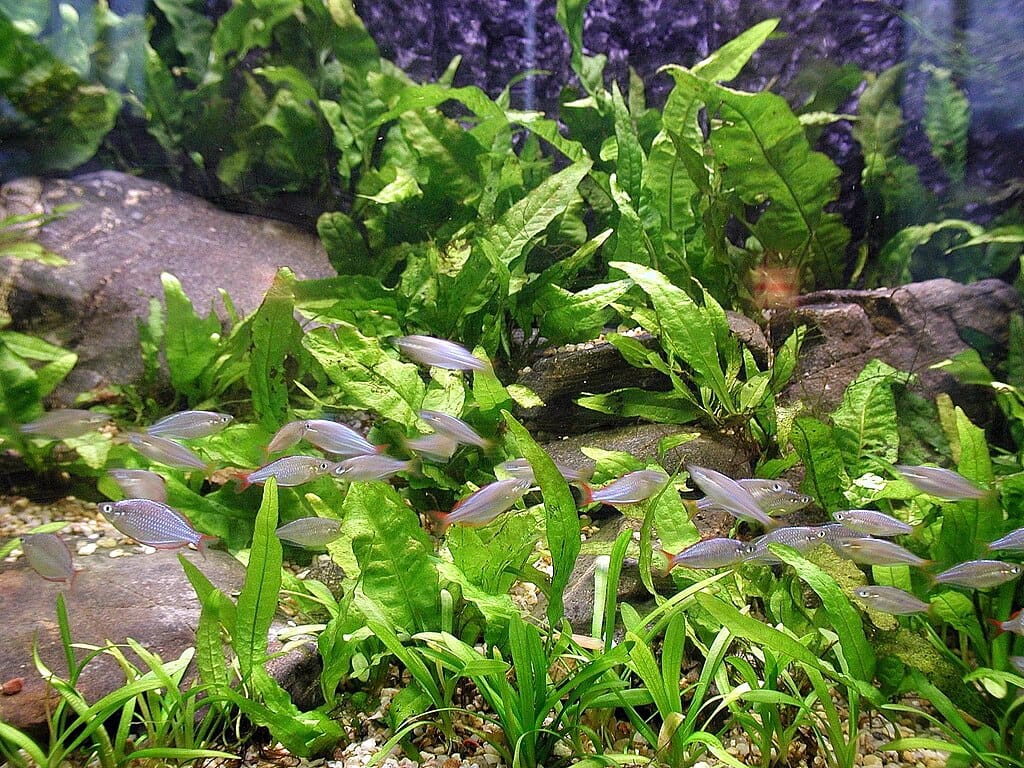
Popular Aquascaping Styles
One of the most exciting parts of aquascaping is choosing your layout style. Each has its own personality, techniques, and challenges — and there’s no single “right” way to do it. Here are some of the most popular styles for beginners to explore:
1. Nature Aquarium
Inspired by natural landscapes such as mountains, forests, and riverbanks, this style blends rocks, driftwood, and plants in a harmonious, organic way. The goal is to mimic nature, often with asymmetrical layouts and a mix of plant species.
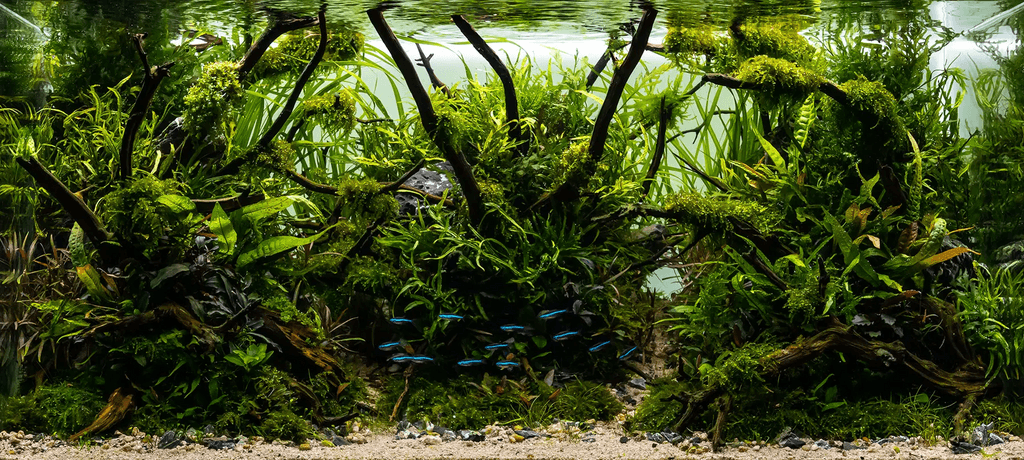
2. Iwagumi
Minimalist and meditative, Iwagumi uses only rocks as the hardscape, usually in odd-number groupings for balance. Carpet plants are often used to create a clean, open look.
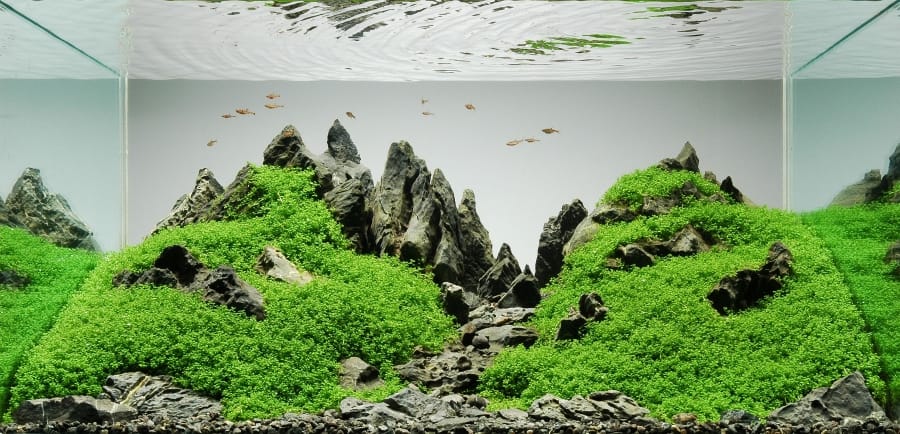
3. Dutch Style
Characterised by dense plant growth arranged in terraces or “streets” of colour and height contrast. Dutch aquascapes rarely include rocks or driftwood, focusing entirely on plant variety and placement.
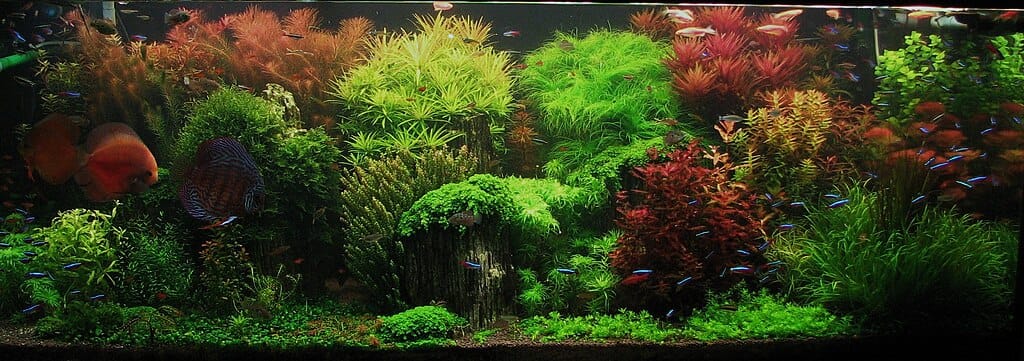
4. Jungle Style
Wild and untamed, the Jungle style uses tall, fast-growing plants and a more natural, less-manicured approach. It’s forgiving for beginners and ideal for creating dense hiding spots for fish.
Exploring these styles will help you understand different layout principles and inspire you to experiment until you find your own signature look.
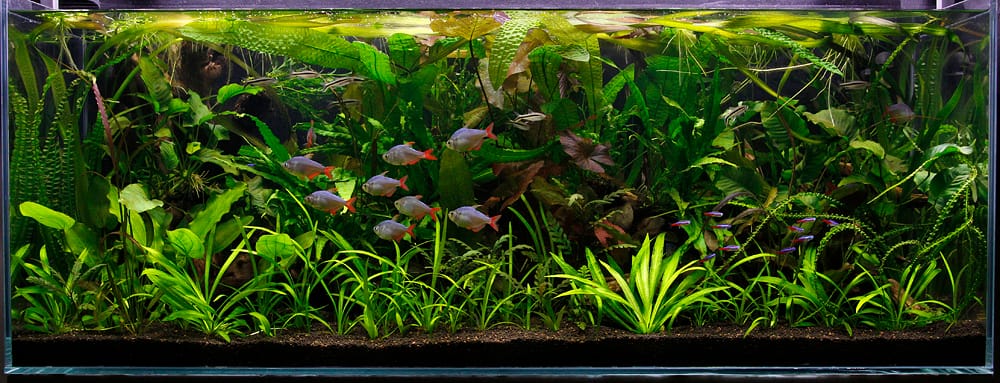
Essential Tools & Equipment
While aquascaping is an art, having the right tools makes it much easier to bring your vision to life. Here are the essentials for aquascaping for beginners:
1. Aquascaping Scissors
Curved or straight scissors help you trim plants precisely without disturbing the layout.
2. Planting Tweezers
Long tweezers allow you to plant delicate stems or carpeting plants without crushing them.
3. Substrate
Choose between a nutrient-rich substrate for plant growth or an inert substrate with root tabs.
4. Aquarium Lighting
Good lighting is crucial for healthy plant growth and to enhance the aquascape’s colours. LED fixtures are energy-efficient and customizable.
5. Filtration System
A reliable filter keeps water clear and stable. Canister filters are popular for planted tanks as they preserve CO₂ levels.
6. CO₂ System (Optional)
Pressurised CO₂ boosts plant growth and allows for more demanding plant species, though many beginner aquascapes thrive without it.
7. Hardscape Materials
Rocks, driftwood, and decorative elements form the backbone of your layout.
With these tools, setting up and maintaining your aquascape becomes far easier — and more enjoyable.
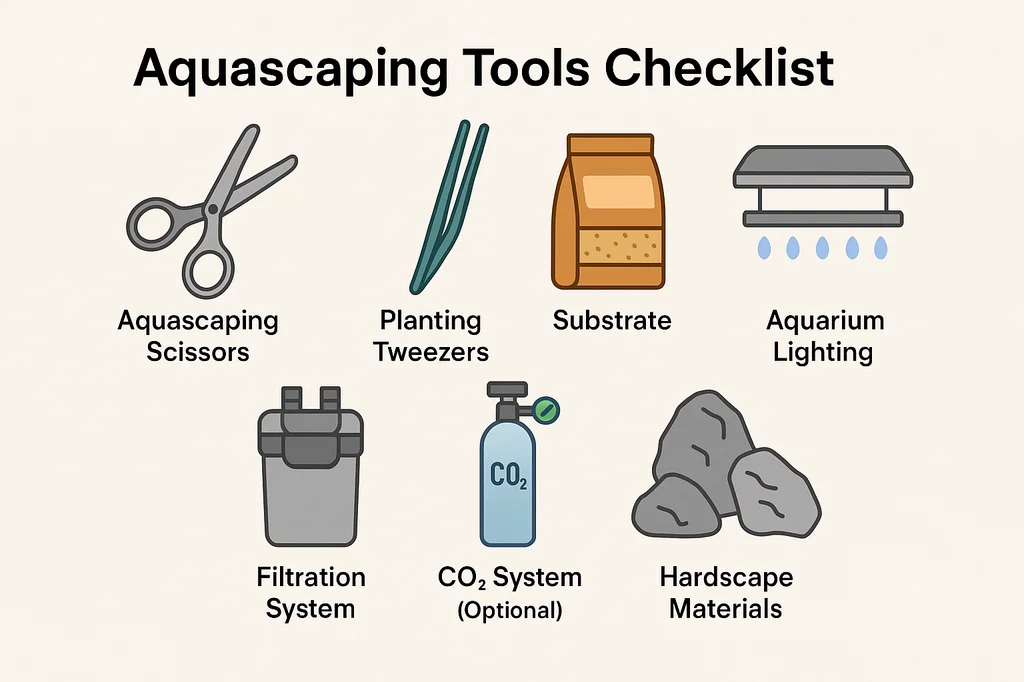
Choosing Hardscape & Plants
The hardscape is the backbone of your aquascape — it sets the scene and gives the layout structure. Plants bring it to life, adding colour, movement, and texture. Choosing the right combination is key to a balanced, eye-catching design.
Hardscape Materials
- Rocks: Popular choices include Seiryu Stone (blue-grey with white veins), Dragon Stone (brown with textured holes), and Ryuoh Stone. Rocks can create mountainscapes, riverbanks, or dramatic focal points.
- Driftwood: Adds natural curves and character. Spider wood and Mopani wood are common. Soak or boil before use to prevent floating and tannin release.
- Gravel & Sand: Useful for creating paths, riverbeds, or contrasting areas within your aquascape.
Beginner-Friendly Plants
- Java Fern (Microsorum pteropus) — Hardy, slow-growing, and thrives attached to rocks or wood.
- Anubias — Tough, shade-tolerant plant ideal for hardscape attachment.
- Vallisneria — Tall, grass-like plant perfect for background depth.
When choosing plants, aim for a mix of foreground, midground, and background species for depth and layering. Select hardy, low-maintenance plants if you’re new to aquascaping — they’ll give you more time to focus on layout and fish care.
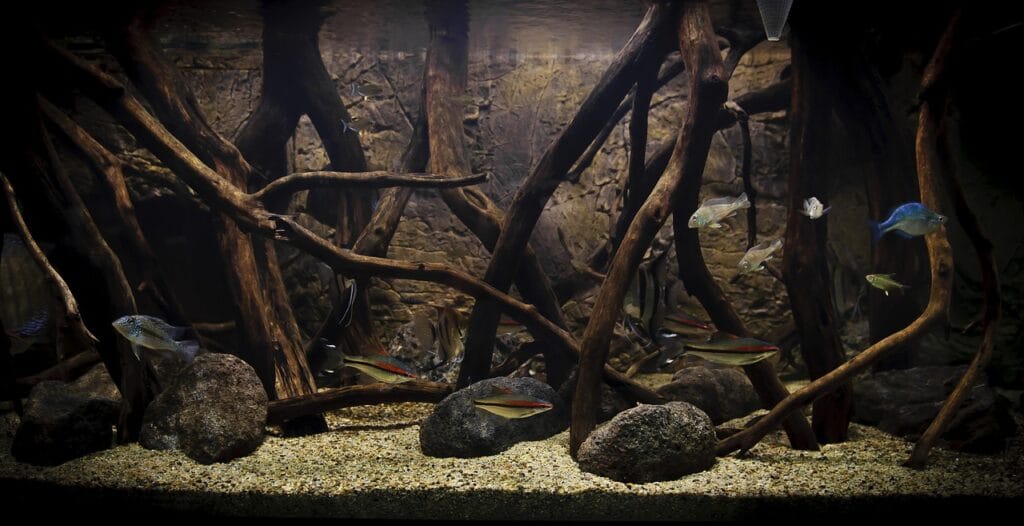
Basic Aquascaping Techniques
Mastering a few simple aquascaping techniques will help you create layouts that look balanced, natural, and visually appealing.
1. Rule of Thirds
Instead of placing your main focal point in the centre, divide your aquarium into a 3×3 grid and position key features along the lines or intersections. This creates a more dynamic composition.
2. Creating Depth
Arrange taller plants and larger hardscape pieces toward the back, and shorter plants toward the front. Use different textures and leaf sizes to enhance the illusion of distance.
3. Foreground, Midground, Background Layering
Foreground plants (like carpeting species) set the stage, midground plants add structure, and background plants provide a lush backdrop. Combining all three gives your aquascape dimension.
4. Using Negative Space
Leaving open areas of sand or gravel creates breathing room in your layout and draws attention to focal points.
5. Consistency in Hardscape Angles
When using rocks or driftwood, keep their angles consistent for a cohesive look.
By practising these basics, you’ll develop layouts that feel both artistic and natural. Over time, you can experiment with advanced methods like perspective tricks or complex plant groupings.
Maintenance Tips for a Thriving Aquascape
A well-maintained aquascape not only looks beautiful but also supports healthy plant and fish life. Consistency is key, and a simple routine can prevent most common problems.
1. Perform Regular Water Changes
Replace 20–30% of the water weekly to dilute excess nutrients and maintain stable water parameters. Always treat tap water to remove chlorine and chloramines before adding it to the tank.
2. Trim and Prune Plants
Frequent trimming encourages healthy, bushy growth and prevents faster-growing species from overshadowing others. Remove dead or decaying leaves to reduce waste buildup.
3. Clean Glass and Equipment
Use an algae scraper or magnetic cleaner on the glass once a week. Check filters, heaters, and CO₂ systems to ensure they are functioning properly. Avoid over-cleaning biological filter media to preserve beneficial bacteria.
4. Monitor Light and CO₂ Levels
Ensure lighting duration is consistent, typically 6–8 hours daily for most setups. If using CO₂ injection, keep levels stable and avoid sudden fluctuations that can stress plants and fish.
5. Test Water Regularly
Check pH, hardness, nitrates, and other key parameters to detect imbalances early. Adjust fertilisation and maintenance schedules accordingly.
By sticking to these habits, your aquascape will remain healthy, vibrant, and easier to manage in the long run.
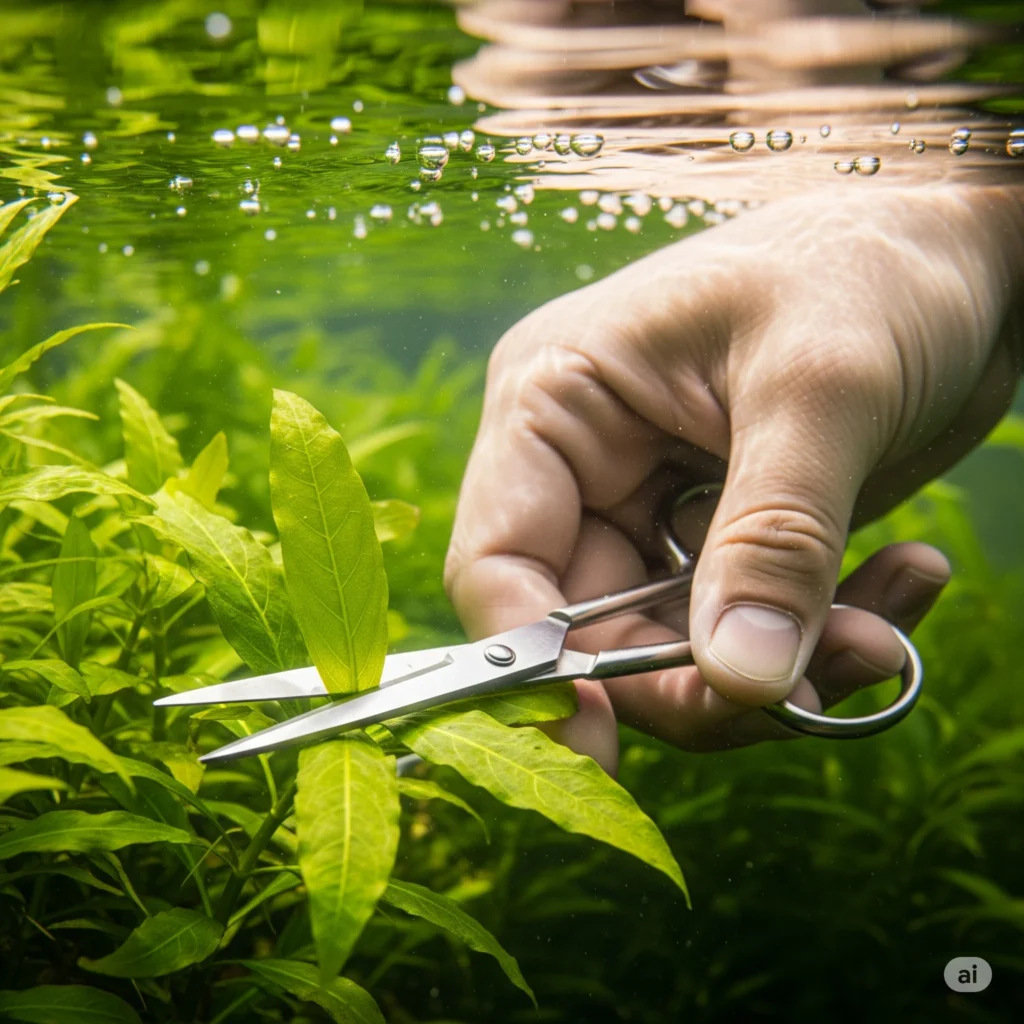
Common Beginner Mistakes
Even with the best intentions, beginners often make similar mistakes that can lead to frustration and poor results. Recognising these pitfalls early will help you create a healthier, more visually appealing aquascape.
1. Overcrowding Plants or Hardscape
Packing too many plants or decorations into the tank makes it look cluttered and can hinder plant growth. Start with fewer elements and allow space for growth.
2. Poor Lighting Choice
Using lighting that’s too weak prevents plants from thriving, while overly intense lighting can trigger algae blooms. Match your lighting to your plant selection and tank size.
3. Ignoring Water Parameters
Neglecting to monitor pH, hardness, and nutrient levels can stress plants and fish. Consistent testing and adjustments are essential for stability.
4. Not Planning the Layout in Advance
Skipping the design phase can result in a disorganised look. Sketch or arrange your hardscape outside the tank before committing.
5. Mixing Incompatible Plant Types
Combining plants with vastly different care requirements often leads to uneven growth and maintenance challenges. Choose species with similar needs when starting out.
By avoiding these mistakes, you’ll set your aquascape up for long-term success and enjoyment.

Aquascaping Tips for Beginners
If you’re new to the hobby, these tips for aquascaping for beginners will help you create a beautiful layout while avoiding common pitfalls.
Start Small
Work with a smaller tank before moving on to larger, more complex setups. It’s easier to maintain and less costly to experiment with.
Choose Hardy Plants First
Begin with species like Java fern, Anubias, or Vallisneria, which are resilient and require minimal care.
Be Patient
Aquascapes take time to mature. Allow plants to grow naturally before making major changes.
Observe and Learn
Follow other aquascapers online, watch tutorials, and visit aquascaping competitions for ideas and techniques.
Plan Ahead
Sketch your layout and think about plant placement before you start. This saves time and prevents constant rearranging.
By starting small, choosing the right plants, and learning from experienced aquascapers, you’ll set yourself up for long-term success.
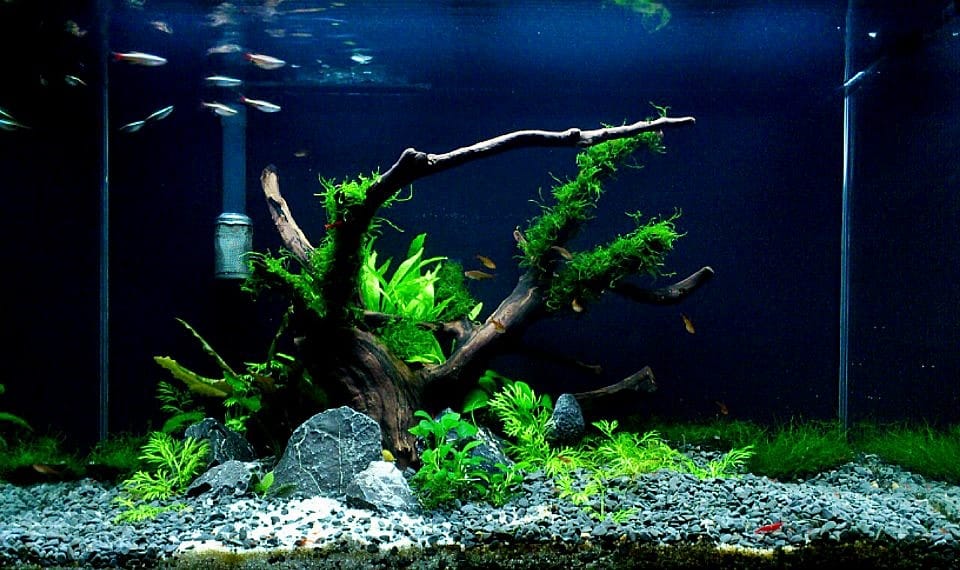
Image by gy960 — used with permission.
Aquascaping is a rewarding blend of creativity, patience, and technical know-how. While the variety of plants, layouts, and techniques may seem overwhelming at first, every aquascaper starts with a single tank and a vision. By mastering the basics, avoiding common mistakes, and learning from both successes and setbacks, you’ll see your skills — and your aquascapes — flourish over time.
Start small, focus on balance and harmony, and remember that aquascaping is as much about the journey as the finished design. With practice, your tank can become a living work of art that brings beauty, relaxation, and inspiration to your space.

